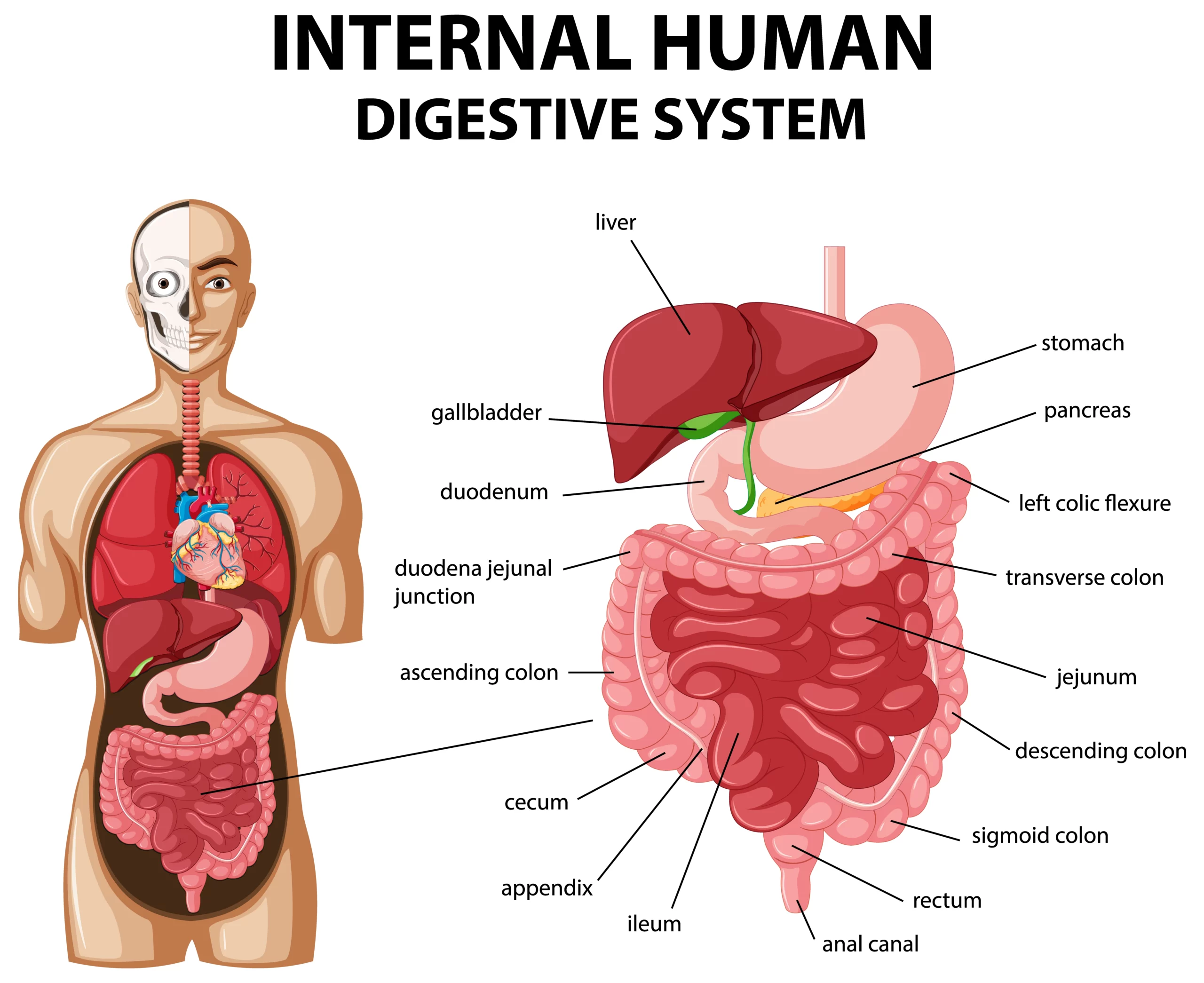Navigating the Human Digestive System: Your Food’s Amazing Journey
Our bodies are incredible, and one of the most intriguing systems within them is the digestive system. This system does the important job of turning the food we eat into energy and nutrients that fuel our bodies. Let’s take a fascinating tour through the human digestive system, exploring the pathway our food takes and the helper glands that make it all happen.
The Alimentary Tract: A Roadmap for Nutrients
The alimentary tract, also known as the gastrointestinal (GI) tract, is a continuous tube that stretches from the mouth to the anus. It’s divided into different parts, each playing a role in digesting and absorbing nutrients from our food.
1. Mouth and Salivary Glands: Our journey begins in the mouth, where food is broken down mechanically by our teeth and chemically by the enzymes in saliva. The salivary glands produce this saliva, which contains enzymes that start the process of breaking down carbohydrates.
2. Pharynx and Esophagus: From the mouth, food moves to the pharynx and then the esophagus through swallowing. The esophagus uses rhythmic contractions, or peristalsis, to push the food down into the stomach.
3. Stomach: Once in the stomach, food meets gastric juices produced by gastric glands. These juices, including hydrochloric acid and pepsin, collaborate to break down proteins and create a semi-liquid mixture called chyme. The stomach’s muscular walls mix and churn the chyme to assist digestion.
4. Small Intestine: Most digestion and nutrient absorption happen in the small intestine, which has three parts: the duodenum, jejunum, and ileum. The pancreas secretes enzymes that continue breaking down carbohydrates, proteins, and fats. The liver also plays a role by producing bile, which is stored in the gallbladder and released into the small intestine to help break down fats.
5. Large Intestine (Colon): Undigested materials move into the large intestine, where water and electrolytes are reabsorbed, turning the chyme into feces. Beneficial bacteria in the colon ferment certain undigested carbohydrates and produce vitamins.
6. Rectum and Anus: The journey ends in the rectum, where feces are stored until they’re ready to be eliminated through the anus.
The Secretory Glands: Helpers in Action
Throughout the alimentary tract, various glands release important substances that aid in digestion.
1. Salivary Glands: These glands produce saliva containing enzymes that initiate the breakdown of carbohydrates and mucus that lubricates the food.
2. Gastric Glands: Found in the stomach lining, these glands secrete gastric juices with hydrochloric acid and pepsin to digest proteins.
3. Pancreas: This gland releases digestive enzymes to the small intestine, continuing the breakdown of carbohydrates, fats, and proteins. It also releases bicarbonate to neutralize stomach acid.
4. Liver and Gallbladder: The liver produces bile, which is essential for breaking down fats. The gallbladder stores and releases bile when needed.
Marveling at Digestion’s Harmony
The human digestive system is a true marvel of coordination. Every part, from the mouth to the end, and every gland plays a critical role in turning our meals into the energy and nutrients our bodies crave. So, next time you enjoy a meal, remember the incredible journey your food takes through the digestive system’s intricate network.





Leave a Reply
You must be logged in to post a comment.